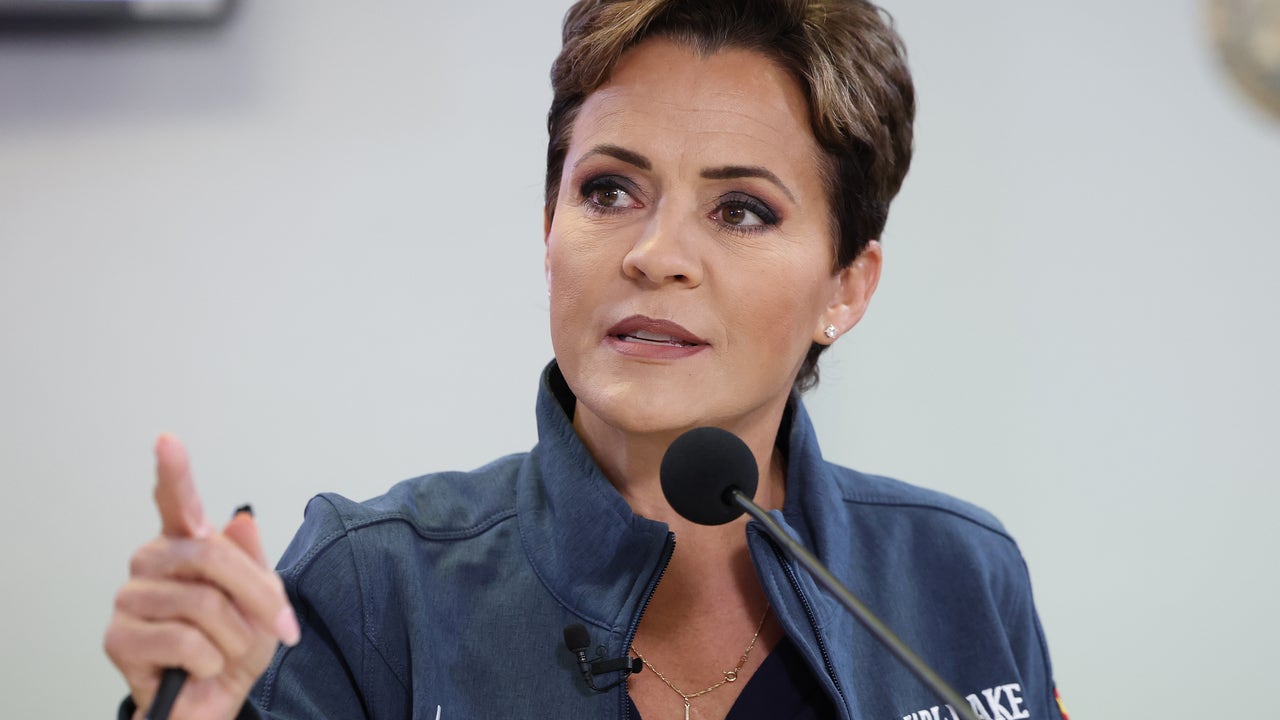by Natalia Mittelstadt, Just The News:
 Two witnesses in Kari Lake’s Arizona election challenge trial testified Wednesday that Maricopa County signature reviewers worked less in the general election than in the primary, despite more ballots having to be reviewed.
Two witnesses in Kari Lake’s Arizona election challenge trial testified Wednesday that Maricopa County signature reviewers worked less in the general election than in the primary, despite more ballots having to be reviewed.
Wednesday was the first day of a three-day trial for Lake’s election challenge.
She fell about 17,000 votes short in the official count for the 2022 gubernatorial election against then-Secretary of State Hobbs and is suing Hobbs, who’s the current Democratic governor, current Secretary of State Adrian Fontes (D) and Maricopa election officials, requesting the results be invalidated or that she be declared the winner.
TRUTH LIVES on at https://sgtreport.tv/
Earlier this month, the Arizona Supreme Court ordered court proceedings to take place “forthwith” regarding Lake’s claim the county violated its signature verification practices in last year’s general election.
The court granted one sanction against her legal team but denied the attorneys’ fees that defendants had requested.
On Wednesday, Jacqueline Onigkeit and Andrew Myers, each level 1 signature reviewers for the 2022 primary and general elections in Maricopa, testified as witnesses for Lake about their experiences as temporary election workers.
Signature reviewers examine signatures on mail-in ballot affidavit envelopes and compare them to signatures for the corresponding voters on the voter registration database to ensure that the registered voter cast the ballot.
Maricopa, the state’s largest and most populous county, receives electronic images of ballot envelopes with the signatures from Runbeck Election Services, which signature reviewers then compare to the voter-registration file.
The file has a combination of voter registration forms or ballot envelopes from prior elections, Onigkeit testified.
Level 1 signature reviewers either approve or reject signatures in batches of 250, then have to re-review each batch after completing them. When a signature is rejected, it is sent to the level 2 reviewers, who have more samples of signatures from the voter to compare the ballot envelope to.
Onigkeit and Myers each said that while they worked long hours and on weekends during the 2022 primary election to verify signatures, they didn’t work as long in signature verification during the week or on the weekends for the general election, even though there were more ballots in the November election.
Onigkeit testified that signature reviewers were told to leave before the end of the last day when there were still ballots that hadn’t been reviewed. There were 1.3 million mail-in ballots cast in the 2022 general election in Maricopa.
She was involved in ballot curing, as well, which means contacting voters whose signatures had been rejected to ensure that the voter cast the ballot.
Onigkeit said that ballot curers were told to leave early on the last day of curing when there were still about 6,00 to 7,000 ballots left to be cured.
She also noted that there were some signatures in voters’ histories – either previous envelopes or voter registration form – that didn’t match the name of the voter, which reviewers were told to record and send to a superior to fix.
The two witnesses also testified that the level 2 reviewers were overwhelmed with rejected signatures and sent signatures back to level 1 reviewers to check again without examining the signatures themselves because there were so many.
One of the level 2 reviewers told Myers that he would get “crushed” with signatures to review. However, Myers said that the number of signatures he had to review stayed consistent, which didn’t make sense to him.
On Election Night, Tuesday, Nov. 8, Myers said that reviewers were told that there would be 298,000 ballots to review. Despite not receiving the ballot images until later on Wednesday, on Friday, reviewers were told that all of the ballots had been reviewed.
“And then by Friday, it was done – all 298,000, we were done with it, is what we were told, which made no sense – if we could only do 60,000, 70,000 a day, you know, we surely couldn’t have done that in 36 hours, is basically what it was,” Myers said.
He also helped with ballot curing and noted that his job was done on Nov. 14, as he “never saw any more ballots to be cured. And I would have expected, after 298,000, to have seen 5, or 7, or 8,000 ballots that needed to be cured, but never saw that.”
Myers explained that this didn’t make sense if about 60,000-70,000 signatures were reviewed ar day, as they had been, to complete all 298,000 “in basically 36 hours.”



